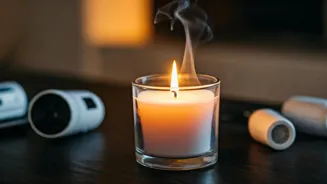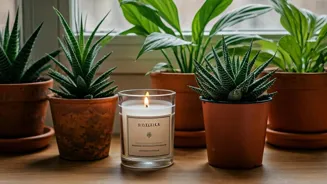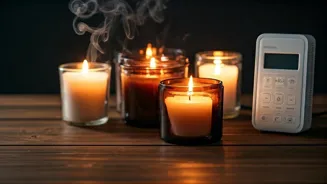The Candle Chemistry
Scented candles, while creating a pleasant ambiance, often release a cocktail of chemicals into the air as they burn. The wax itself, frequently paraffin,
can emit volatile organic compounds (VOCs) when heated. Moreover, the fragrance added to create scents, can also contribute to poor indoor air quality. Many of these chemicals aren't harmless; some are known irritants or potential health hazards. The burning process releases these chemicals, which can spread throughout the house. These compounds can linger for hours, potentially leading to ongoing exposure and health concerns. Understanding the science behind what's happening in your home's air is essential.
Air Quality Impacts
Poor indoor air quality is a significant concern when using scented candles, and can affect your well-being. The release of VOCs and other pollutants can irritate the respiratory system, triggering symptoms like coughing, sneezing, and difficulty breathing, especially for those with asthma or allergies. Regular exposure to these pollutants can contribute to headaches, nausea, and fatigue. Over time, some of the chemicals released by candles may even have long-term health effects. The impact on air quality isn't just about the immediate scent; it's about creating a healthier living environment.
Health Risks Unveiled
Doctors are cautioning against the potential health risks tied to regular use of scented candles. VOCs, such as benzene and toluene, released during burning, have been linked to respiratory problems and can worsen existing conditions. Certain fragrance chemicals may also trigger allergic reactions and skin irritations. The long-term exposure to these chemicals could potentially affect the body, increasing health risks. The cumulative effect of these exposures might also lead to more significant health concerns. Focusing on ways to decrease the risks is essential.
Safer Alternatives Explored
Fortunately, there are numerous alternatives for creating a pleasant atmosphere without compromising your health. Consider candles made from natural waxes, like soy or beeswax, which often burn cleaner and emit fewer pollutants. Essential oil diffusers are a good option for dispersing natural fragrances without the combustion byproducts. Proper ventilation is key: make sure your home has good airflow, particularly when using any air fresheners or candles. Regularly airing out your home can help refresh the air and reduce concentrations of any potential pollutants. Embracing natural fragrance options can make your home a healthier and more pleasant space.












